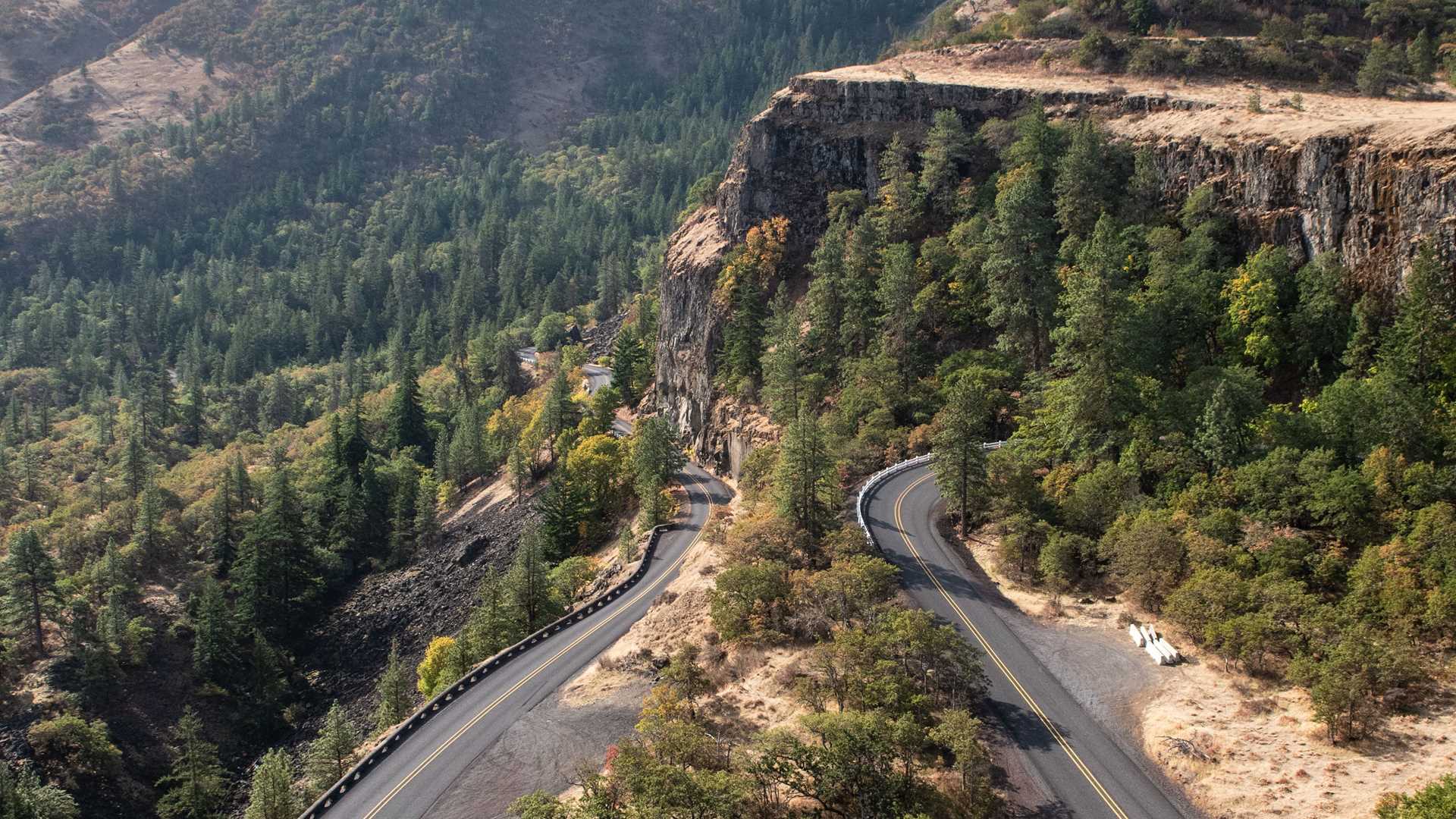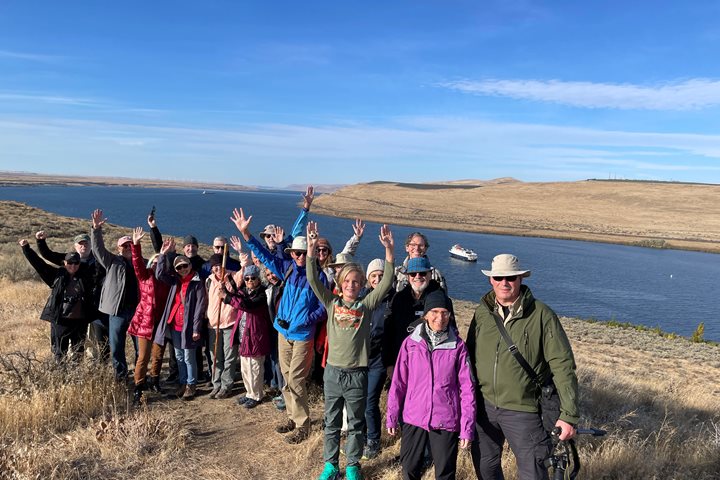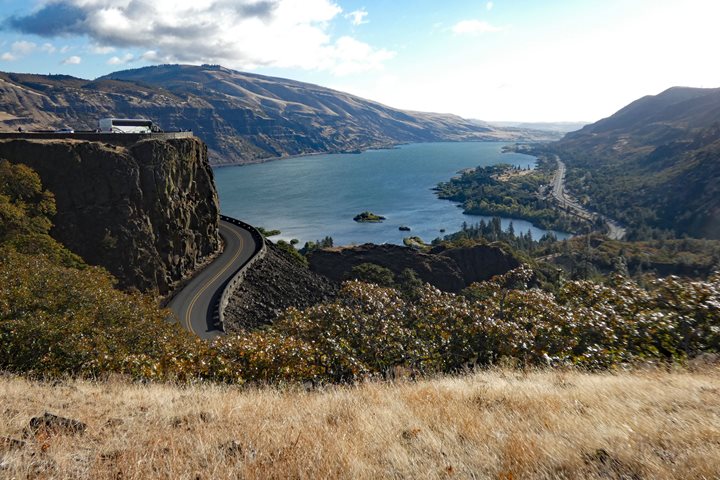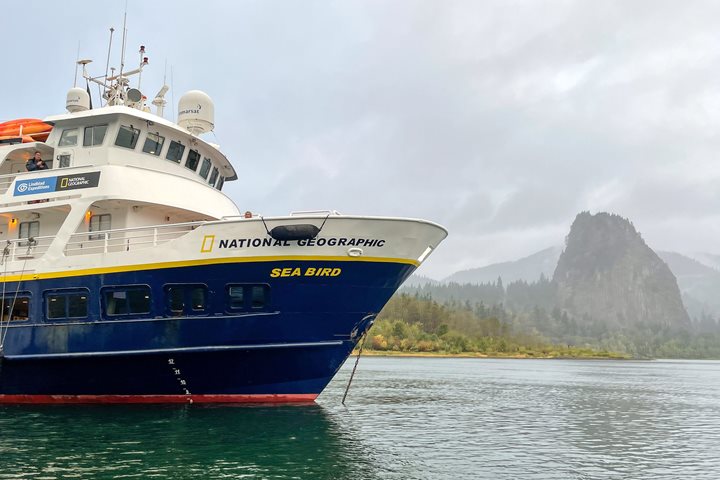Today was a day spent transiting the zone between temperate and arid, sage and fir, mountains and plateau. To get started, we pulled alongside in the town of The Dalles, Oregon at first light.
The Dalles was established as a portage for early pioneers trying to navigate the rapids of the lower Columbia River. Thousands of years before the children and grandchildren of those pioneers built The Dalles Dam, Celilo Falls was a cultural hub where dozens of Native American tribes converged each spring and fall, drawn by the prolific number of salmon migrating upstream to the head of the rapids. To get around the falls, early entrepreneurs built short railroads and other forms of transport options for travelers moving along the famed Barlow Trail, en route West.
Like those early pioneers we headed west from The Dalles, bound for an afternoon at Rowena Crest, the Mosier Tunnels and the Hood River Valley beyond. Rowena Crest and the Mosier Tunnels are part of Oregon’s historic highway, dreamed up by lawyer Sam Hill and implemented by engineer Samuel Lawrence in the early 1900s. Twisting and turning above the Columbia River, this old highway offers a chance to slow down and get out of the fast lane. Sections of the remaining road are for foot and bike traffic only and offered us stunning hiking opportunities along a four-mile stretch of Oregon’s highway history.
From there we drove further west to the Hood River Valley for a lunch break at Crag Rats Climbing Hut. This venue was once basecamp for search and rescue operations around the Mt. Hood area. Today it is a stunning vantage point for a lunch overlooking the famed “fruit loop,” a verdant valley filled with some of Oregon’s best growing conditions and, as such, some of the state’s most prolific fruit production.
To get a closer look at life on one of these orchards we headed to Draper’s Farm following lunch and had a chance to sample some of the apples and pears that make this valley so rich. Year-round water (from winter-spring rains and summer-fall melt coming from Mt. Hood’s eastern glaciers) keeps growing conditions ripe for the picking.
Our last stop of the day was to the Western Antique Aeroplane and Automobile Museum (WAAAM). Within the museums two massive buildings sit some of the most beautiful examples of early propulsion. From planes that look like the original Kittyhawk of Wright Brother fame, to hot rods of the 50s and 60s, WAAAM volunteers and staff ensure that each of the hundreds of vehicles in this museum are not only in mint condition but can be driven, or flown, making this collection unique amongst auto museums.
Back aboard the National Geographic Quest, we pulled away from The Dalles during twilight, entering our second lock of the trip moments later, ushering in the next phase of our transit up this iconic river.







